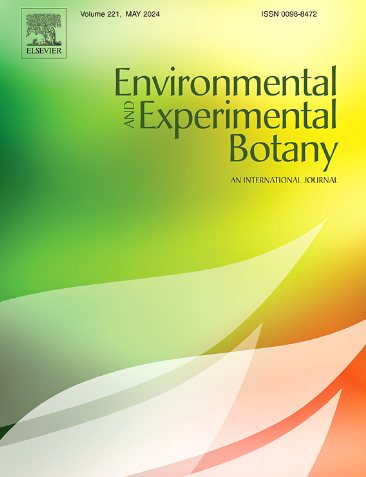Impact of soil water availability on apple tree physiology during heatwaves and on post-stress recovery
IF 4.5
2区 生物学
Q2 ENVIRONMENTAL SCIENCES
引用次数: 0
Abstract
In this study, the physiological response of potted apple trees to combined drought and heat stress was evaluated. After establishing different levels of soil water availability, the trees were exposed to a five-day simulated heatwave with daily maximum temperatures of 40°C. Stem water potential, leaf gas exchange, chlorophyll fluorescence, and tree transpiration were monitored before, during and after the combined application of heat and water stress, therefore providing insights into the extent and rapidity of the recovery. Drought caused stomatal closure that limited net photosynthesis and transpiration both at leaf and at tree level, leading to structural damage through leaf loss. On drought-stressed plants, chlorophyll fluorescence was significantly reduced by heat stress, suggesting additional leaf damage although net photosynthesis was not lower than under drought stress alone. On the other hand, well-watered trees showed low midday stem water potentials and high transpiration rates during the heatwave, while net photosynthesis was not affected. Water use efficiency of well-watered trees at 33°C was reduced to 60 % of that at 23°C. After the heatwave, transpiration rate in well-watered trees immediately declined to pre-stress levels, underscoring the strong atmospheric control on transpiration in apple trees. In drought-stressed trees, predawn stem water potential reached pre-stress values already on the first day of recovery. Stomatal conductance, net photosynthesis, and chlorophyll fluorescence, however, required a longer period to recover, indicating that drought stress induced transient hydraulic limitations. Nevertheless, all parameters fully recovered within five days after the end of the heatwave, showing that apple trees can withstand periods of combined heat and drought stress. The key role of water in modulating the response to heat stress highlights the need for improved irrigation management in apple orchards under climate change.
土壤水分有效性对高温期苹果树生理及胁迫后恢复的影响
研究了盆栽苹果树对干旱和高温联合胁迫的生理反应。在建立了不同水平的土壤水分可用性之后,这些树木暴露在为期五天的模拟热浪中,每天最高温度为40°C。在热胁迫和水胁迫联合施用之前、期间和之后监测茎水势、叶片气体交换、叶绿素荧光和树木蒸腾,从而了解恢复的程度和速度。干旱导致气孔关闭,限制了叶片和乔木水平的净光合作用和蒸腾作用,导致叶片损失造成结构破坏。在干旱胁迫的植株上,热胁迫显著降低了叶绿素荧光,表明尽管净光合作用不低于单独干旱胁迫,但叶片受到了额外的伤害。另一方面,水分充足的树木中午茎秆水势低,蒸腾速率高,而净光合作用不受影响。水分充足的树木在33°C时的水分利用效率降低到23°C时的60% %。高温过后,水分充足的苹果树蒸腾速率立即下降到胁迫前水平,说明大气对苹果树蒸腾的控制作用较强。在干旱胁迫的树木中,黎明前的茎水势在恢复的第一天就已经达到了应力前的值。然而,气孔导度、净光合作用和叶绿素荧光需要更长的时间才能恢复,这表明干旱胁迫引起了短暂的水力限制。然而,在热浪结束后的五天内,所有参数都完全恢复,这表明苹果树可以承受高温和干旱的双重压力。水在调节对热胁迫的反应中的关键作用强调了在气候变化下改善苹果园灌溉管理的必要性。
本文章由计算机程序翻译,如有差异,请以英文原文为准。
求助全文
约1分钟内获得全文
求助全文
来源期刊

Environmental and Experimental Botany
环境科学-环境科学
CiteScore
9.30
自引率
5.30%
发文量
342
审稿时长
26 days
期刊介绍:
Environmental and Experimental Botany (EEB) publishes research papers on the physical, chemical, biological, molecular mechanisms and processes involved in the responses of plants to their environment.
In addition to research papers, the journal includes review articles. Submission is in agreement with the Editors-in-Chief.
The Journal also publishes special issues which are built by invited guest editors and are related to the main themes of EEB.
The areas covered by the Journal include:
(1) Responses of plants to heavy metals and pollutants
(2) Plant/water interactions (salinity, drought, flooding)
(3) Responses of plants to radiations ranging from UV-B to infrared
(4) Plant/atmosphere relations (ozone, CO2 , temperature)
(5) Global change impacts on plant ecophysiology
(6) Biotic interactions involving environmental factors.
 求助内容:
求助内容: 应助结果提醒方式:
应助结果提醒方式:


